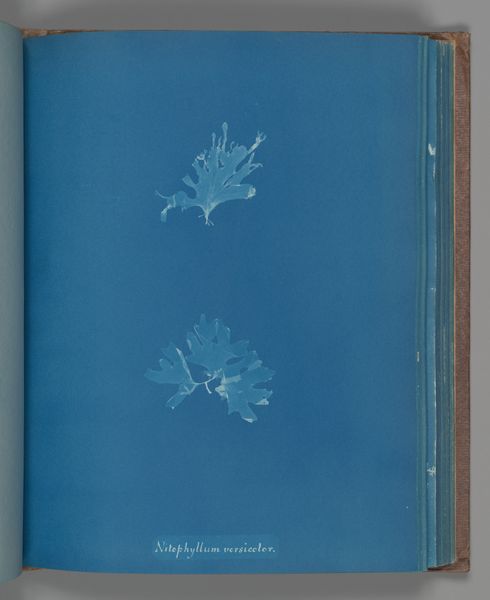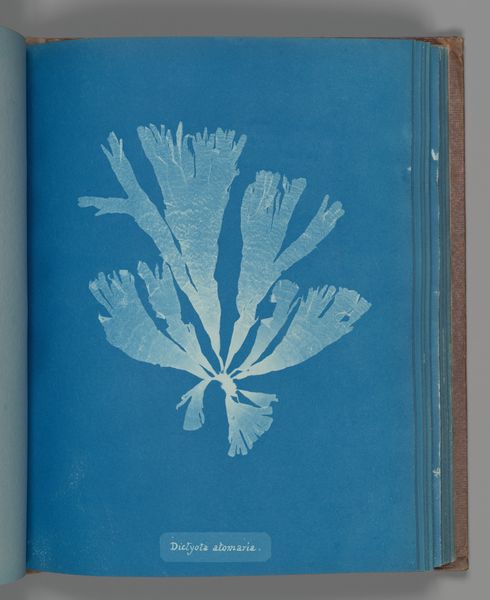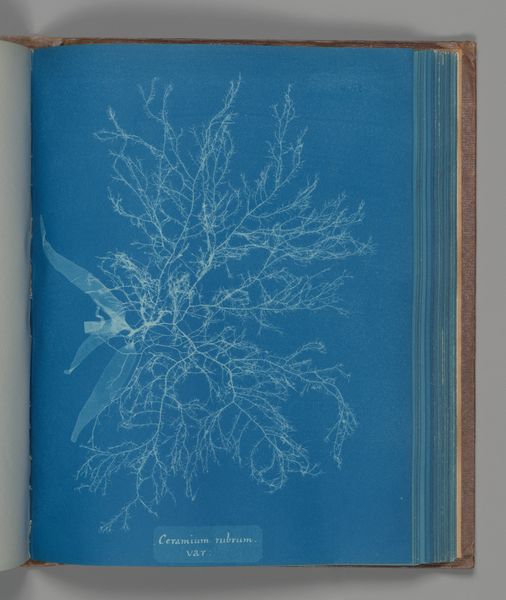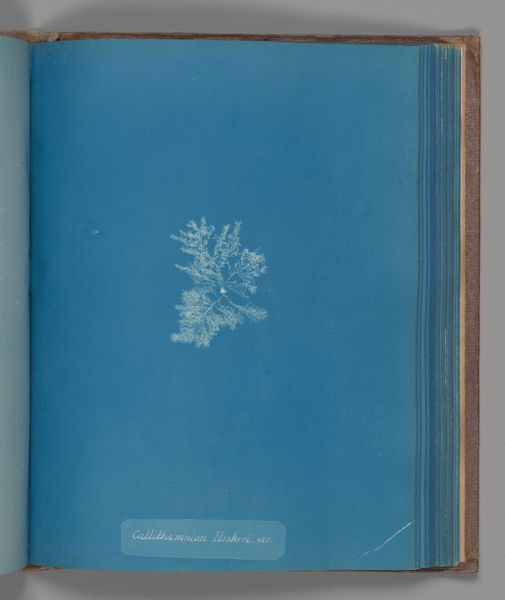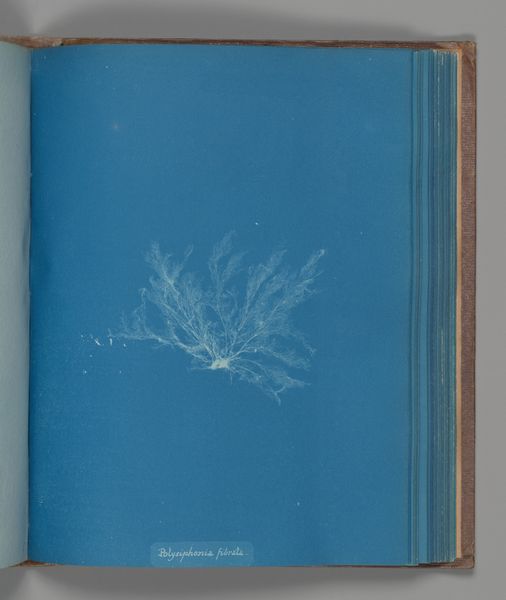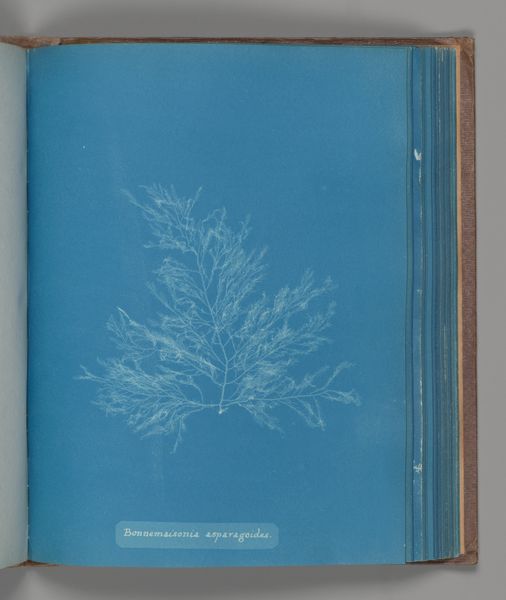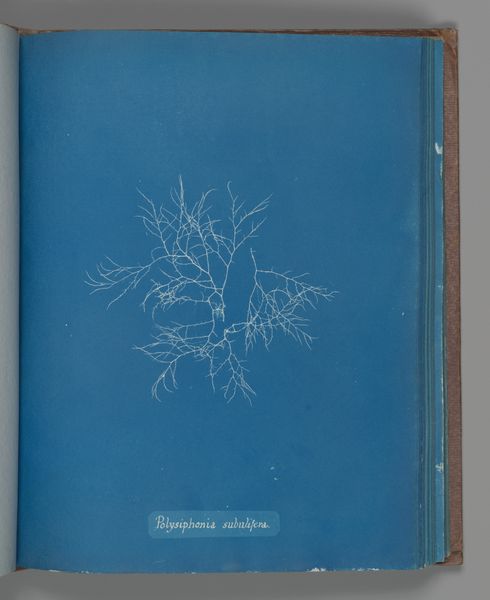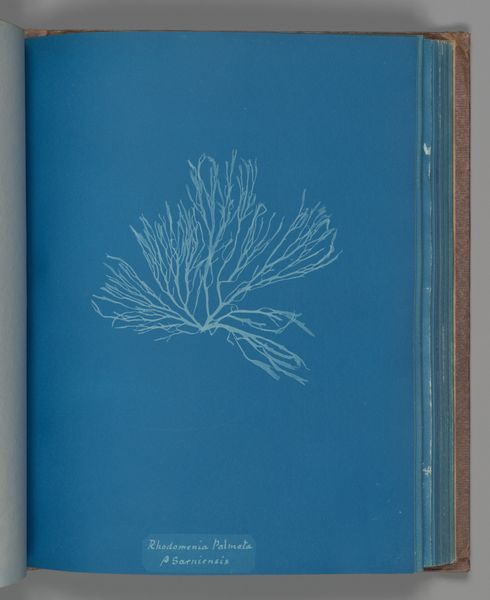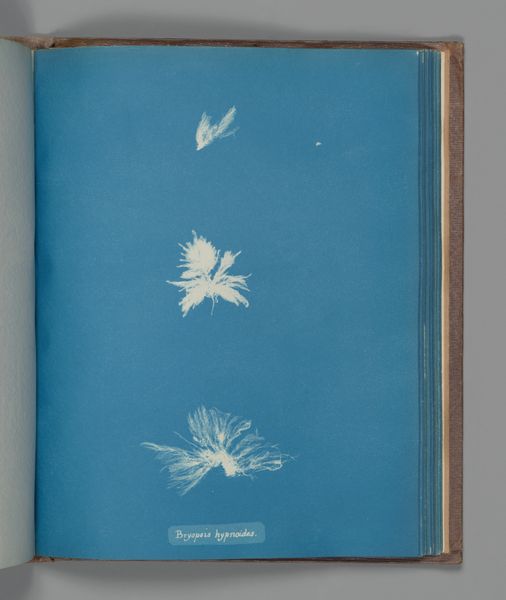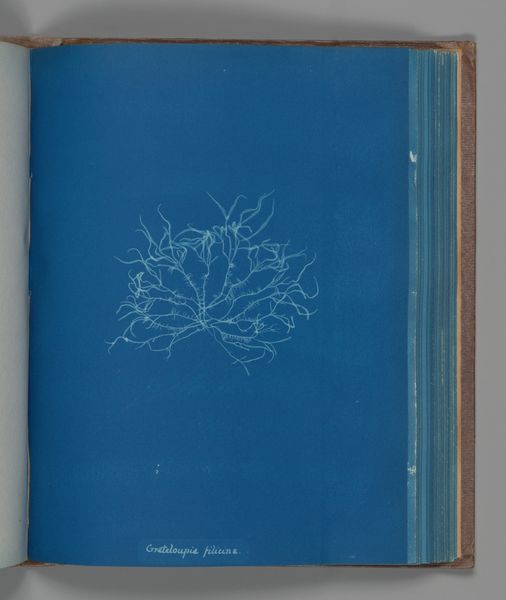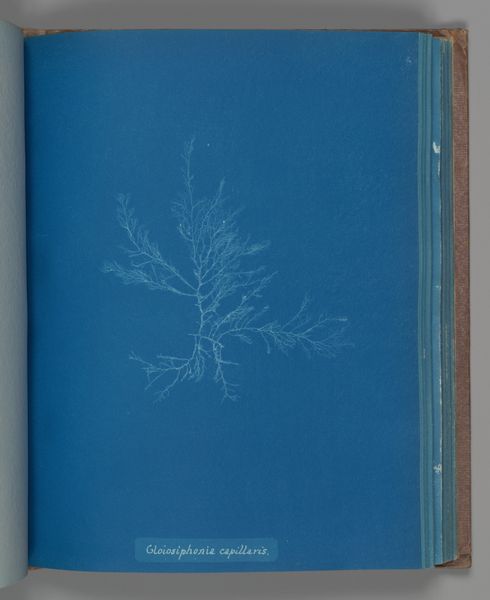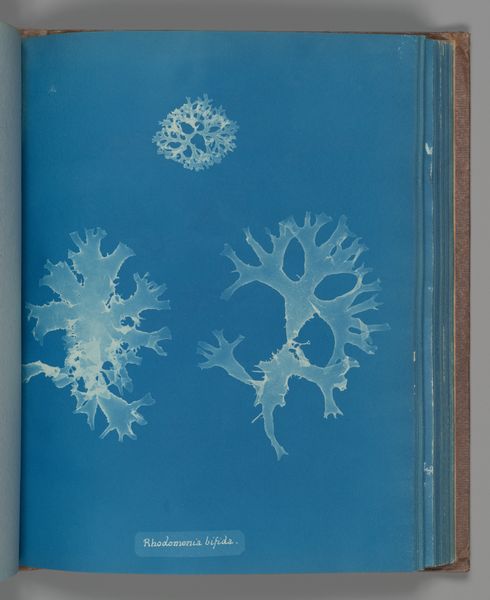
print, paper, cyanotype, photography
#
still-life-photography
#
paper non-digital material
# print
#
paper
#
cyanotype
#
photography
#
naturalism
Dimensions: Image: 25.3 x 20 cm (9 15/16 x 7 7/8 in.)
Copyright: Public Domain
This is a cyanotype of *Rhodomenia bifida, var. latifolia* made by Anna Atkins in the mid-19th century. The cyanotype process, a very early form of photography, involves coating paper with light-sensitive chemicals and then placing an object, in this case seaweed, directly onto the surface. When exposed to sunlight, the paper turns a deep blue, except where the object blocks the light. What we see, then, is an image made by light itself. Atkins, a botanist, used this technique to create detailed visual records of plant specimens, combining scientific observation with artistic expression. The ethereal quality of the blue, and the delicate details captured, speak to the inherent beauty of the natural world. Atkins’s work is significant because it bridges the gap between art and science, using a relatively new technology to create images that are both informative and aesthetically pleasing. It reminds us that all forms of making involve choices about materials, processes, and context. Ultimately challenging our traditional understanding of fine art, craft, and design.
Comments
No comments
Be the first to comment and join the conversation on the ultimate creative platform.
